How to Fertilize Roses for Luxurious Growth: Tips and Tricks from the Pros
- February 20, 2024
- 0 comment
Discover expert tips on how to fertilize roses for luxurious growth and stunning blooms. Perfect for gardeners seeking lush rose gardens. Embark on a journey to transform your rose garden into a haven of beauty and vitality. In this guide, we reveal the secrets and professional strategies for fertilizing roses, ensuring they achieve luxurious growth and produce breathtaking blooms.
Whether you’re a seasoned gardener or just starting out, these tips will empower you to nurture your roses with confidence, elevating your garden’s charm and allure. Join us as we delve into the art of rose fertilization, guided by the wisdom of the pros.
Table of Contents
- Understanding Rose Nutrition
- Choosing the Right Fertilizer
- Best Time to Fertilize Roses
- How to Fertilize Roses: Step-by-Step Guide
- Advanced Tips and Tricks from the Pros
- Common Fertilization Mistakes to Avoid
- Troubleshooting Common Issues
- Conclusion
- FAQs
Understanding Rose Nutrition

Roses captivate with their intricate blooms and enchanting fragrances, standing as symbols of beauty and complexity in the garden. Yet, their splendor is not without need; roses demand a well-balanced diet to thrive, one that extends beyond the basic NPK (Nitrogen, Phosphorus, Potassium) nutrients to include a suite of micronutrients, each playing a unique role in the health and vitality of the plant.
- Nitrogen (N): The primary driver for foliage growth, nitrogen ensures that roses have the energy to produce lush, green leaves and strong stems. It acts as the foundational building block, supporting the photosynthesis process and, subsequently, the plant’s growth and bloom potential.
- Phosphorus (P): Essential for the development of roots and blooms, phosphorus supports the transfer of energy within the plant, facilitating the conversion of sunlight into chemical energy. Its role is pivotal during the flowering stage, where it encourages the production of large, vibrant blooms.
- Potassium (K): Known as the “health booster,” potassium fortifies roses against diseases, environmental stresses, and temperature extremes. It regulates water uptake and loss, ensuring that the plant remains hydrated and resilient. Additionally, potassium contributes to the synthesis of proteins and starches, strengthening stem and root systems.
The Role of Micronutrients in Rose Health
Micronutrients, though required in smaller quantities, are essential for the prevention of specific nutrient deficiencies and for promoting optimal plant health and flower quality:
- Calcium (Ca) strengthens cell walls, enhancing plant structure and stress resistance.
- Magnesium (Mg) is a central component of chlorophyll, facilitating photosynthesis.
- Sulfur (S) is integral to amino acid formation, crucial for protein synthesis.
Nutrient Requirement Table for Roses
| Nutrient | Function | Optimal Soil Level* |
|---|---|---|
| Nitrogen (N) | Promotes leaf and stem growth | 3-5% |
| Phosphorus (P) | Supports root development and bloom production | 30-50 ppm |
| Potassium (K) | Enhances disease resistance and stem strength | 150-200 ppm |
| Calcium (Ca) | Strengthens cell walls | 1000-1500 ppm |
| Magnesium (Mg) | Key for chlorophyll production | 100-150 ppm |
| Sulfur (S) | Essential for protein synthesis | 10-30 ppm |
| Iron (Fe) | Crucial for chlorophyll synthesis | 4-5 ppm |
| Manganese (Mn) | Activates enzymes for plant growth | 0.5-1 ppm |
| Zinc (Zn) | Important for hormone production and enzyme function | 0.5-1 ppm |
| Copper (Cu) | Involved in photosynthesis and protein synthesis | 0.5-1 ppm |
| Boron (B) | Essential for cell wall formation and growth | 0.2-0.5 ppm |
| Molybdenum (Mo) | Necessary for nitrogen fixation | <0.1 ppm |
*Optimal soil levels are indicative and can vary based on specific rose varieties and local soil conditions. Regular soil testing is recommended to maintain these levels within the optimal range for your roses.
By understanding the scientific principles behind rose nutrition and adhering to the guidelines provided by soil tests, gardeners can optimize the health and beauty of their roses. Tailoring fertilization practices based on specific nutrient requirements and seasonal changes ensures that roses not only survive but thrive, showcasing their full potential in bloom size, color, and fragrance.
Choosing the Right Fertilizer
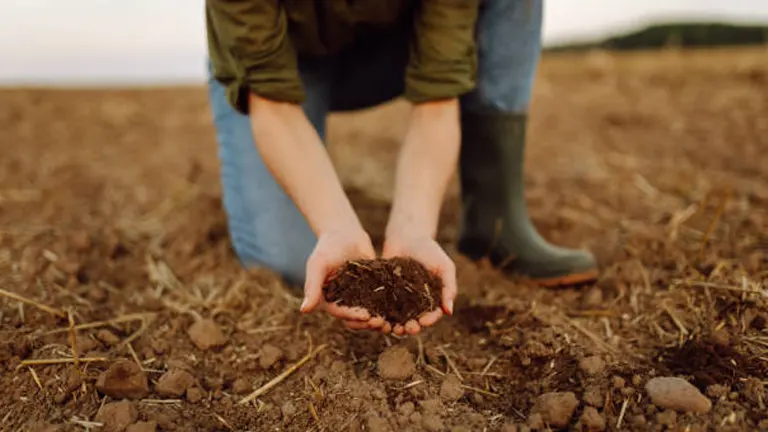
The market offers a myriad of fertilizers, each promising to be the elixir of life for your roses. Yet, selecting the right one is not about the fanciest label or the most persuasive marketing but understanding the specific needs of your roses.
- Organic vs. Synthetic Fertilizers: Organic fertilizers, derived from natural sources such as manure, bone meal, or compost, release nutrients slowly, mimicking the natural feeding process of plants. Synthetic fertilizers, on the other hand, provide a quick nutrient boost but can lead to salt build-up in the soil if used excessively.
- Slow-Release vs. Liquid Fertilizers: Slow-release fertilizers are ideal for providing a steady supply of nutrients over a period, reducing the risk of over-fertilization. Liquid fertilizers, while offering immediate nutrient availability, require more frequent application.
Professional Tip: Look for fertilizers that also contain micronutrients like calcium, magnesium, and sulfur, which are vital for roses’ health and resilience against stress and disease.
Best Time to Fertilize Roses
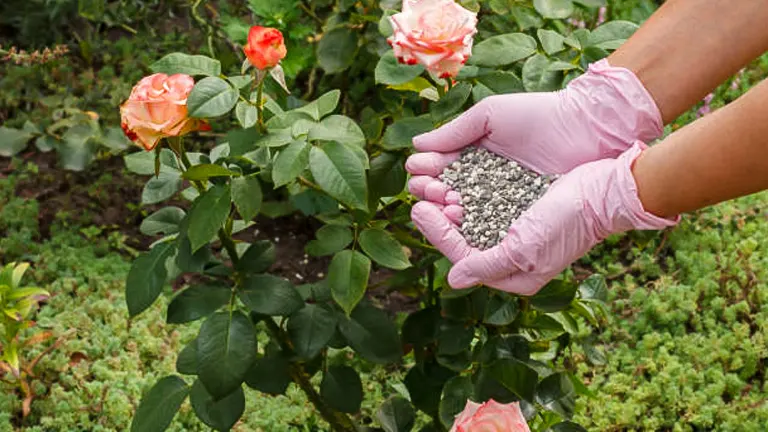
Timing is everything when it comes to fertilizing roses. The goal is to provide your roses with the nutrients they need at the stages of growth when they can best utilize them.
- Early Spring: Begin fertilizing when the first leaves appear and the soil has started to warm up. This initial feeding wakes the roses from dormancy and supports new growth.
- After the First Bloom Cycle: Reapply fertilizer following the first flush of blooms to encourage future flowering. This is usually in late spring or early summer, depending on your climate.
- Summer to Early Fall: Continue to fertilize lightly every 4 to 6 weeks through the growing season, but stop fertilization at least 6 weeks before your area’s first frost date to prevent new growth that could be damaged by cold.
Professional Tip: Avoid fertilizing roses late in the season. New growth needs time to harden off before winter; otherwise, it’s susceptible to frost damage.
How to Fertilize Roses: Step-by-Step Guide
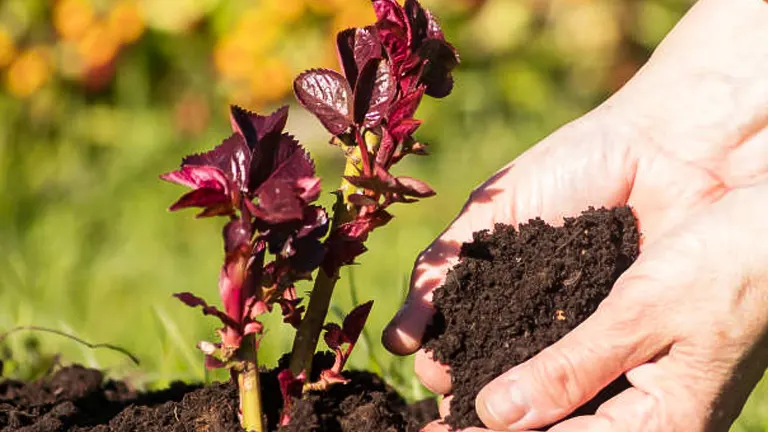
Fertilizing roses effectively is a blend of art and science, requiring precision in both the choice of fertilizer and the application method. This guide is designed to demystify the process, ensuring your roses receive the nutrients they need for optimal growth and blooming.
1. Pre-Fertilization Soil Preparation
- Soil Testing: Ideally, start with a soil test to determine the nutrient needs of your garden. This helps in selecting the most appropriate fertilizer for your roses.
- Watering: Hydrate your roses 24 to 48 hours before applying fertilizer. Properly moistened soil ensures optimal nutrient absorption and prevents root shock.
2. Choosing the Right Fertilizer
- Select Based on Nutrient Needs: Use the results of your soil test to pick a fertilizer that matches the specific needs of your roses. Consider a balanced formula (e.g., 10-10-10) for general care or one with higher phosphorus content for bloom support.
- Organic vs. Synthetic: Decide between organic fertilizers, which improve soil health over time, and synthetic ones, which offer quick nutrient release. Both have their place in rose care, depending on your goals and preferences.
3. Applying the Fertilizer
- Granular Fertilizers: Apply evenly around the base of each rose bush, starting a few inches from the stem to avoid direct contact with the roots. Use a rake to gently incorporate the fertilizer into the top layer of soil, which helps prevent nutrient runoff and ensures it reaches the roots.
- Liquid Fertilizers: Dilute as directed on the package and apply to the soil at the base of the plant. Liquid fertilizers are absorbed quickly and can be used for mid-season boosts.
4. Post-Fertilization Care
- Immediate Watering: After applying fertilizer, water your roses thoroughly. This helps distribute the nutrients deep into the root zone and prevents fertilizer burn.
- Mulching: Cover the soil around your roses with a 2-3 inch layer of organic mulch. Mulch conserves moisture, moderates soil temperature, and as it breaks down, it adds organic matter to the soil, further enriching it.
5. Monitoring and Adjustments
- Observe Plant Response: Watch how your roses respond to fertilization. Healthy growth and vibrant blooms indicate successful nutrient uptake, while signs of distress suggest adjustments may be needed.
- Seasonal Adjustments: Tailor your fertilization routine to the growing season. Reduce or eliminate fertilizer application in late summer to prepare roses for dormancy.
Additional Tips for Success
- Frequency: Fertilize every 4-6 weeks during the growing season, adjusting based on the rose’s response and fertilizer type.
- Avoid Over-Fertilization: Excess nutrients can harm your roses more than a deficiency. Follow package directions and soil test recommendations closely.
- Special Considerations for Potted Roses: Container roses may require more frequent fertilization due to limited soil resources. Use a slightly diluted fertilizer solution to prevent salt buildup in the potting mix.
Professional Tip: Always follow the recommended dosage on the fertilizer package. More is not always better; over-fertilizing can lead to lush foliage at the expense of blooms and can even harm your roses.
Advanced Tips and Tricks from the Pros
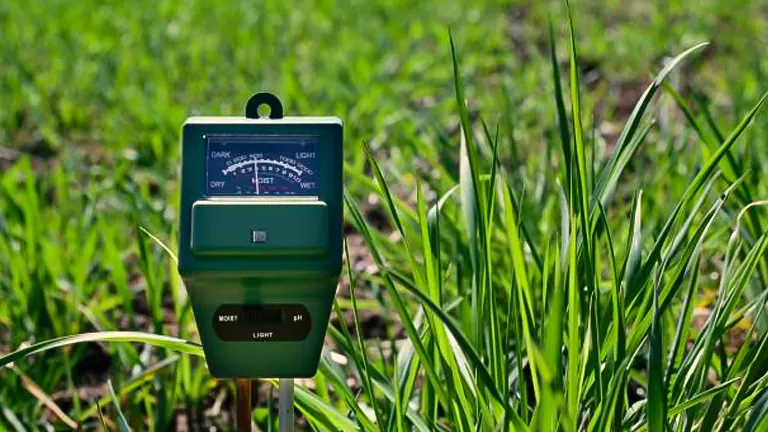
Achieving exceptional rose garden results requires a blend of art, science, and a deep understanding of the specific needs of each variety. Here are expert strategies, complemented by scientific insights, to elevate your rose care regimen:
1. Precision Fertilization Based on Varietal Needs
- Understand Varietal Specifics: Each rose variety has unique nutritional requirements. Research and document the specific needs of your varieties, adjusting your fertilization plan to match. For instance, hybrid tea roses may require more frequent fertilization than shrub roses due to their continuous blooming cycle.
2. Strategic Use of Compost and Organic Amendments
- Quality Over Quantity: Integrate high-quality compost or well-rotted manure into your soil to improve structure and nutrient availability. This practice encourages beneficial microbial activity, enhancing nutrient uptake.
- Recipe for Success: Consider creating your compost blend, incorporating specific materials like banana peels for potassium, eggshells for calcium, and coffee grounds for nitrogen, to craft a nutrient-rich mix tailored to roses.
3. Advanced Soil pH Management
- Precision pH Adjustment: Use sulfur to lower the soil pH or lime to increase it, based on your soil test results. For immediate adjustments, foliar applications of chelated minerals can correct micronutrient imbalances related to pH levels.
4. Implementing a Tailored Nutrient Schedule
- Seasonal Nutrient Adjustments: Adapt your fertilization strategy to the seasonal growth cycles of roses. Increase potassium in late summer to support winter hardiness, and adjust nitrogen levels based on growth phases to avoid promoting late-season soft growth vulnerable to frost.
5. Micronutrient Optimization for Peak Performance
- Micronutrient Mastery: Focus on the balanced supply of micronutrients such as magnesium (for chlorophyll production and photosynthesis efficiency) and iron (to prevent chlorosis, especially in high pH soils).
6. Embracing Technology in Rose Care
- Soil Moisture Sensors and Drip Irrigation Systems: Implementing technology for precise water management can significantly enhance the effectiveness of your fertilization strategy, ensuring that nutrients are optimally delivered to the plant’s root zone.
Advanced Nutrient Management for Roses: A Professional Gardener’s Guide
| Nutrients | Optimal Soil Levels | Optimal Leaf Tissue Levels | Application Recommendations | Professional Insights |
|---|---|---|---|---|
| Nitrogen (N) | 3-5% (Soil) | 2.5-3.5% (Leaf Tissue) | Apply in early spring and after the first flush of blooms. Consider a slow-release form to prevent overgrowth and promote steady, healthy development. | Excess nitrogen can promote foliage at the expense of blooms. Monitor growth and adjust applications to encourage optimal blooming and plant vigor. |
| Phosphorus (P) | 30-50 ppm (Soil) | 0.2-0.4% (Leaf Tissue) | Incorporate into the soil prior to planting and adjust based on soil tests. Use bone meal or rock phosphate for a slow-release, organic source. | Phosphorus is crucial for energy transfer and bloom development. Ensure adequate levels to support root growth and flower production. |
| Potassium (K) | 150-200 ppm (Soil) | 1.5-2.5% (Leaf Tissue) | Apply throughout the growing season, with an increase before winter to enhance hardiness. Potassium sulfate can provide a readily available source. | Potassium improves overall plant health, disease resistance, and stress tolerance. Adjust applications to support these critical areas. |
| Calcium (Ca) | 1000-1500 ppm (Soil) | 1.0-2.0% (Leaf Tissue) | Lime or gypsum can be applied based on soil pH needs. Gypsum is preferred if soil pH adjustment is not required. | Calcium is essential for cell wall strength and disease resistance. Monitor and adjust to maintain structural integrity and health. |
| Magnesium (Mg) | 100-150 ppm (Soil) | 0.2-0.5% (Leaf Tissue) | Epsom salts (magnesium sulfate) can be applied as a soil amendment or foliar spray for quick correction of deficiencies. | Magnesium is a key component of chlorophyll and is vital for photosynthesis. Ensure availability to promote energy efficiency and vibrant foliage. |
| Sulfur (S) | 10-30 ppm (Soil) | 0.1-0.3% (Leaf Tissue) | Elemental sulfur can lower soil pH if needed, improving nutrient availability. Also, consider sulfate forms of nutrients to supply sulfur. | Sulfur plays a critical role in enzyme activity and plant metabolism. Adjust for optimal health and to correct alkaline soil conditions. |
| Micronutrients | Varied based on soil test | Varied based on specific needs | Use foliar feeds or soil amendments to correct identified deficiencies. Chelated forms are preferred for foliar applications. | Tailor micronutrient applications to correct specific deficiencies. Regular soil and tissue testing can guide targeted interventions. |
Note: Optimal levels and recommendations are provided as guidelines based on general rose care practices. Specific needs may vary based on rose variety, soil conditions, and environmental factors. Regular monitoring and adjustment are essential for professional rose care.
Common Fertilization Mistakes to Avoid
Navigating the fertilization process involves a keen understanding of what not to do just as much as following the correct practices. Avoiding these common mistakes can significantly improve the health, vitality, and blooming potential of your roses:
Over-Fertilizing
- Understanding the Balance: Excessive application of fertilizer, particularly high-nitrogen formulas, can disrupt the delicate balance roses need between foliage growth and flower production. While lush green leaves are desirable, the ultimate goal of rose cultivation is vibrant blooms. Over-fertilization can lead to an abundance of leaves at the expense of flowers, and also increase the vulnerability of plants to diseases and pests by promoting soft, sappy growth.
- Solution: Implement a balanced fertilization regimen based on soil test results. This ensures your roses receive the right amount of nutrients without the risk of over-application.
Ignoring Soil pH
- The Role of pH in Nutrient Uptake: Roses flourish in slightly acidic to neutral soil (pH 6.0 to 7.0). Soil pH outside this range can prevent roses from absorbing essential nutrients, even if those nutrients are present in the soil. This can lead to nutrient deficiencies, manifesting as stunted growth, poor blooming, and overall reduced vigor.
- Solution: Regularly test soil pH and adjust as needed using lime (to raise pH) or sulfur (to lower pH). This ensures your roses can access the nutrients they need for optimal growth.
Wrong Timing
- Seasonal Sensitivity: Applying fertilizer at the wrong time can do more harm than good. Early spring fertilization before the last frost can stimulate new growth that is vulnerable to cold damage. Conversely, late-season fertilization can encourage roses to produce growth that won’t harden off before winter, making it susceptible to freeze damage.
- Solution: Time your fertilization efforts to align with the roses’ natural growth cycles—begin in early spring as new growth appears and conclude in late summer to allow plants to prepare for dormancy.
Improper Application
- The Danger of Direct Contact: Fertilizer applied too close to the base of rose plants can lead to root burn, particularly with synthetic fertilizers that are high in salts. This can damage the plant and inhibit its ability to absorb water and nutrients.
- Solution: Apply fertilizers evenly around the drip line of the plant, the area directly beneath the outermost reach of the branches, where rain naturally drips off the leaves. This encourages root growth outward and ensures the fertilizer is where the most active roots can access it. For liquid fertilizers, dilute according to instructions and apply to the soil, not the foliage, to prevent burn.
Implementing Fertilization Best Practices
Understanding these common mistakes—and how to avoid them—empowers gardeners to foster healthier, more beautiful roses. The key lies in adopting a measured, informed approach to fertilization, one that respects the natural needs and cycles of rose plants. By doing so, gardeners can achieve the lush, blooming rose gardens that are the hallmark of skilled horticulture.
Troubleshooting Common Issues
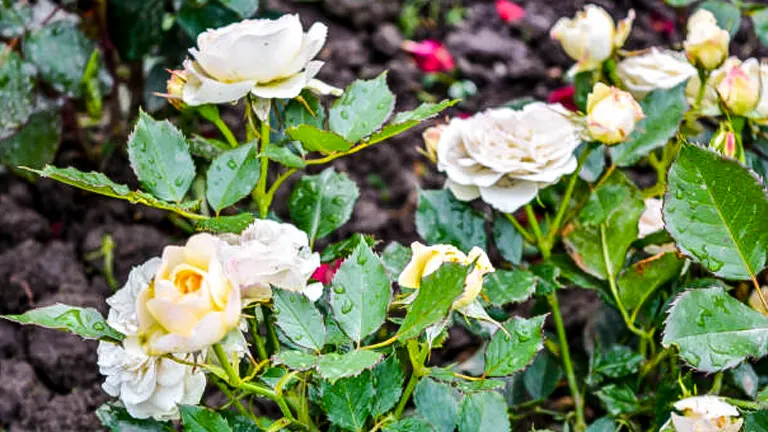
Even with the best care, issues can arise. Here are solutions to some common fertilization-related problems:
- Nutrient Burn: Symptoms include brown or crispy leaf edges and stunted growth. This is often caused by over-fertilization. To remedy, water the affected roses deeply to help flush excess nutrients from the soil. Avoid fertilizing again until the plant shows signs of recovery.
- Under-Fertilization Symptoms: Pale, yellowing leaves, and reduced blooming can indicate nutrient deficiency. If you suspect your roses are under-fertilized, conduct a soil test to determine which nutrients are lacking and adjust your fertilization regimen accordingly. Incorporating a balanced slow-release fertilizer and supplementing with compost can address and prevent under-fertilization.
- Unusual Leaf Colors or Patterns: If you notice leaves turning purple, red, or showing signs of mottling, this could indicate a deficiency in specific nutrients like phosphorus or magnesium. Adjusting your fertilizer type or adding micronutrient supplements can correct these deficiencies.
- Poor Bloom Production: Insufficient phosphorus or overemphasis on nitrogen can lead to lush foliage at the expense of blooms. To encourage more robust blooming, use a fertilizer with a higher phosphorus content, especially during the peak blooming periods.
Related Post
- How to Build a Barn: A Step-by-Step Guide for Beginners
- How to Build a Sustainable Compost Bin: Easy and Eco-Friendly DIY
- How to Fertilize Bougainvillea: A Complete Guide for Stunning Blooms
- How to Fertilize Apple Trees: Essential Tips for a Bountiful Harvest
- How to Fertilize Lemon Trees: Secrets for Thriving Citrus
- How to Fertilize Avocado Tree: A Step-by-Step Guide for Lush Growth
- 10 Best Bow Saws to Buy in 2024: Top Picks for the Money
- Best Miter Saw For Beginners
- Top 10 Pruning Saws to Buy in 2024: Best for the Money
- 7 Best Pocket Chainsaw
Conclusion
Cultivating roses that boast of luxurious growth and vibrant blooms is a rewarding endeavor that hinges on numerous care practices, with fertilization playing a pivotal role. By understanding the nutritional needs of your roses, choosing the right fertilizer, and applying it at optimal times, you can significantly enhance the health and beauty of your rose garden. Remember, the best fertilization approach is one that is thoughtful, observant, and adaptable to the changing needs of your plants.
FAQs
- What’s the role of micronutrients in rose fertilization, and how can I ensure my roses are getting enough?
Micronutrients, like iron, magnesium, and boron, play critical roles in the health of roses, affecting everything from chlorophyll production to flower formation. To ensure your roses receive these essential elements, consider using a micronutrient-rich foliar spray or adding specific amendments like Epsom salts (for magnesium) to the soil. - Can the use of mycorrhizal fungi improve my rose fertilization strategy?
Yes, incorporating mycorrhizal fungi into your soil can significantly enhance nutrient uptake in roses. These beneficial fungi form symbiotic relationships with plant roots, helping them absorb water and nutrients more efficiently. Mix mycorrhizal fungi into the soil at planting time or when adding compost to established plants. - How does mulching influence the fertilization of roses?
Mulching plays a dual role in fertilization: it helps retain soil moisture, ensuring that nutrients dissolve and reach the roots, and as it breaks down, it releases nutrients into the soil. Use organic mulches like well-rotted compost or leaf mold, which enrich the soil as they decompose. - Is there a benefit to ‘foliar feeding’ roses, and how is it done?
Foliar feeding, or applying liquid fertilizer directly to the leaves, can provide a quick nutrient boost and address specific deficiencies. It’s most effective when plants show signs of stress or nutrient need. Mix a water-soluble fertilizer at half the recommended strength and spray it onto the foliage in the early morning or late afternoon to avoid sunburn on the leaves. - How can I adjust my fertilization technique for container-grown roses?
Container-grown roses require more frequent fertilization than those in the ground due to limited soil volume and quicker nutrient depletion. Use a balanced, water-soluble fertilizer every 2-4 weeks during the growing season, and ensure pots have good drainage to prevent nutrient buildup and root damage. - What impact does pruning have on the fertilization needs of roses?
Pruning influences the growth and blooming cycle of roses, which in turn affects their fertilization needs. After a major prune, roses enter a vigorous growth phase and can benefit from a slightly increased application of nitrogen to support new growth. However, it’s crucial to balance this with the overall nutritional needs to avoid overstimulating foliage at the expense of blooms. - Can ‘companion planting’ affect how I fertilize my roses?
Companion planting can influence the nutrient dynamics in your garden. Plants like legumes fix nitrogen in the soil, potentially reducing the need for nitrogenous fertilizers for nearby roses. However, be mindful of companions that might compete with roses for nutrients and adjust your fertilization plan accordingly. - How do weather conditions affect the fertilization of roses?
Weather plays a significant role in fertilization schedules. In periods of intense heat or drought, roses may struggle to absorb nutrients efficiently, requiring adjustments such as increased watering or reduced fertilizer concentration. Conversely, in cool, wet weather, nutrient uptake slows, and less frequent fertilization may be necessary to avoid nutrient overload and potential root damage.
With these insights and strategies, you’re well-equipped to elevate the health and beauty of your roses. Embrace the process, stay attuned to your garden’s unique needs, and enjoy the lush, vibrant results of your careful attention and expertise. Happy Gardening!

Benjamin Brooks
Forestry AuthorGreetings! I'm Benjamin Brooks, and my journey over the past 15 years has revolved around the fascinating realms of content creation, expertise in snow clearing, and the intricate world of lumberjacking and landscaping. What began as a simple curiosity about the natural world and heavy machinery has evolved into a passionate profession where my love for crafting words intertwines seamlessly with my lumberjacking and garden skills.













Leave your comment